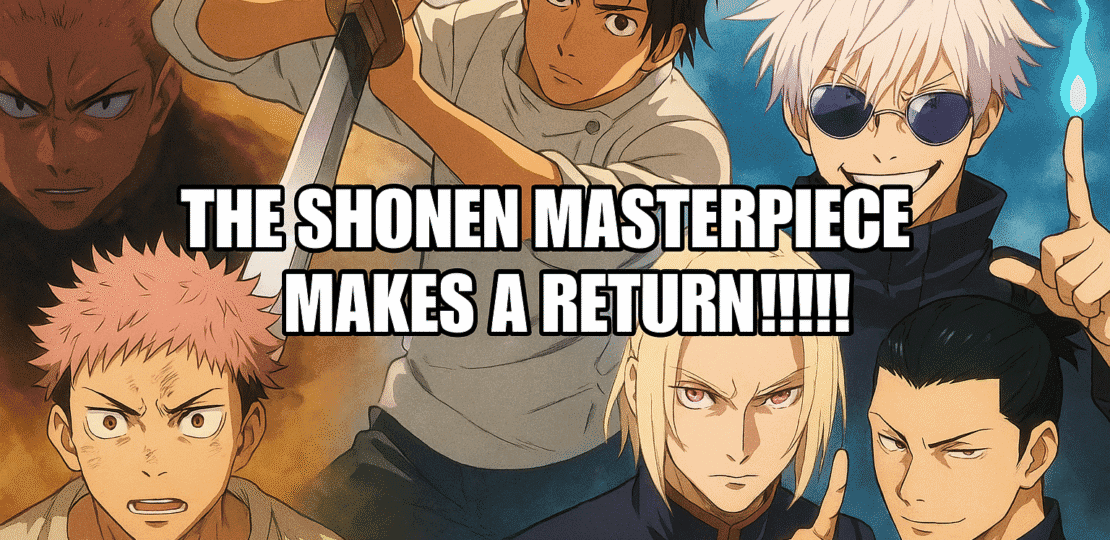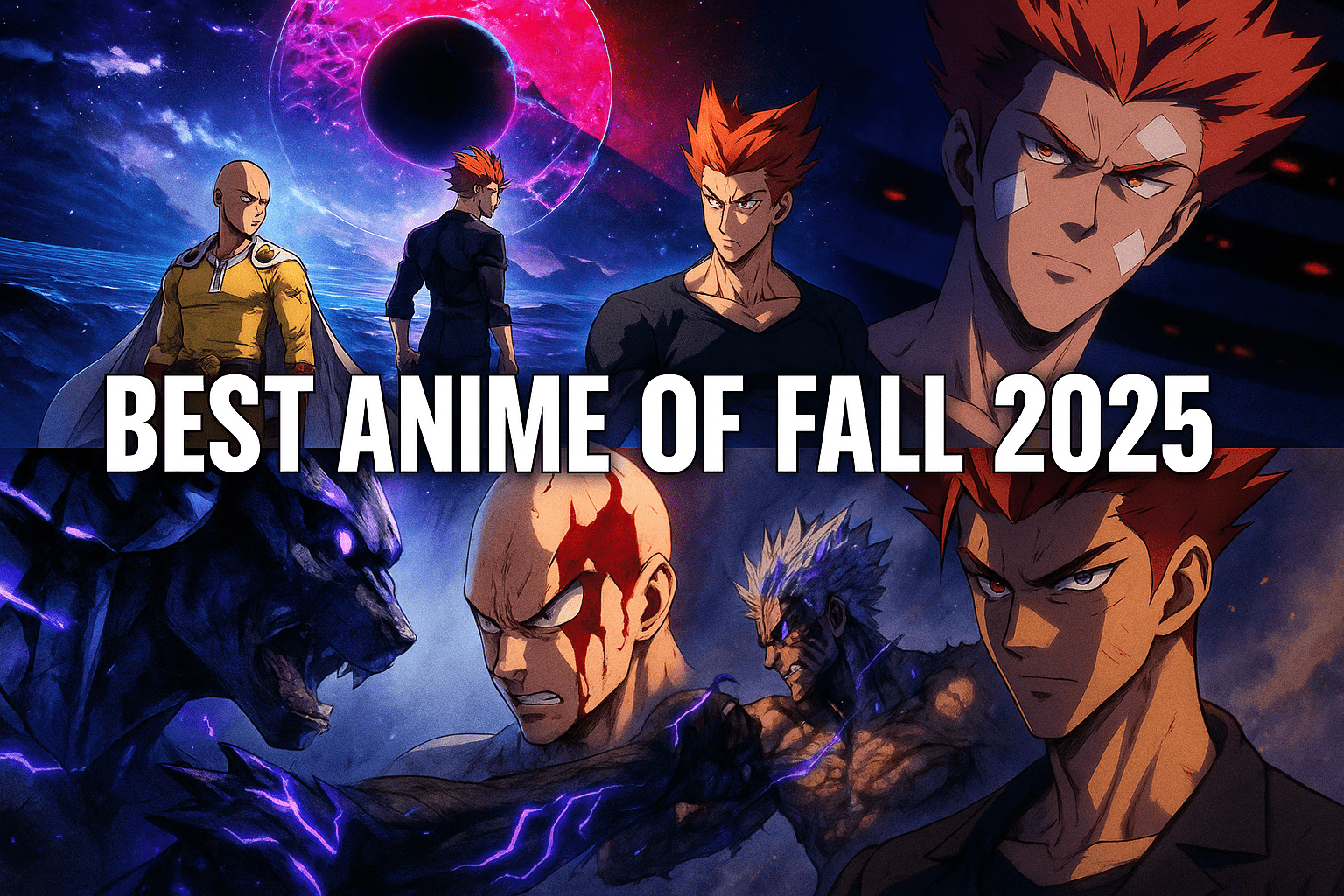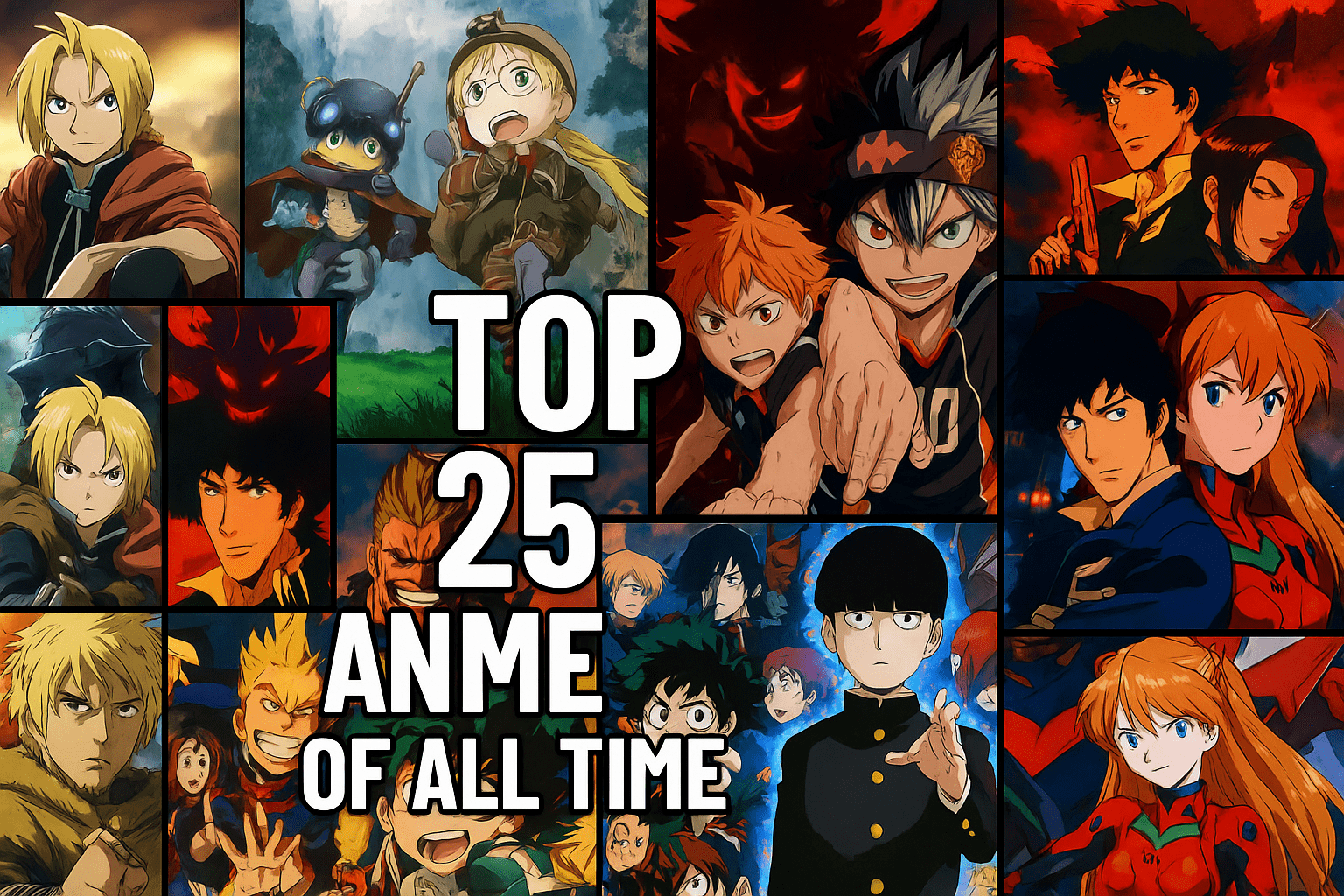Why Jujutsu Kaisen Season 3 will be Better Than What Fans Anticipated
September 16, 2025 | by Haku

Yet, as we approach the premiere in January 2026, emerging details suggest that Jujutsu Kaisen Season 3 is poised not just to meet but to shatter those reservations. Voice actors have teased “developments that will exceed everyone’s expectations,” animation previews hint at a “different level” of visual spectacle, and the arc’s potential for anime adaptation shines brighter than ever. This article delves into why Jujutsu Kaisen Season 3 will surpass fan anticipations, exploring the narrative depth of the Culling Game, MAPPA’s refined production techniques, standout performances, breathtaking fights, fresh characters, enhanced audio elements, and how the series addresses past criticisms head-on. At over 2,000 words, we’ll unpack these facets to illustrate how JJK is evolving into something even greater.
Jujutsu Kaisen Season 3: The Culling Game Arc: A Narrative Masterpiece Ripe for Anime Glory
The Culling Game Arc stands as one of Gege Akutami’s most ambitious undertakings in the Jujutsu Kaisen manga, spanning over 60 chapters and serving as the bridge between the series’ mid-game chaos and its climactic finale. Unlike the more contained arcs of previous seasons, the Culling Game unfolds across massive, colony-like battlegrounds where sorcerers and curse users are pitted against each other in a deadly tournament orchestrated by the ancient sorcerer Kenjaku. This setup allows for a kaleidoscope of conflicts, alliances, and revelations that expand the JJK universe in ways fans might not have fully anticipated from the manga’s initial serialization.
What makes this arc particularly suited for anime adaptation—and why it will exceed expectations—is its potential to streamline the manga’s occasionally labyrinthine structure. In print, the Culling Game can feel overwhelming due to rapid shifts between colonies, introducing dozens of players with unique abilities. However, Jujutsu Kaisen Season 3’s two-cour format (with the first half airing in early 2026 and the second later that year) provides ample room for MAPPA to pace these elements masterfully, much like how they elevated the Hidden Inventory flashback in Season 2. Fans who read the manga might recall frustrations with side characters overshadowing mains or plot threads feeling disjointed, but the anime’s visual medium can interweave these through dynamic editing, flashbacks, and symbolic motifs, turning complexity into cohesion.
Central to the arc is Yuji Itadori’s evolution. Post-Shibuya, Yuji grapples with profound guilt and a fractured sense of purpose, leading to moments of raw vulnerability that humanize him beyond the typical shonen protagonist. The arc delves into themes of free will versus predestination, as ancient curses and reincarnated sorcerers challenge the modern jujutsu society’s foundations. Expect explorations of the Zenin clan’s dark legacy, with Maki Zenin’s transformation into a force of nature stealing scenes—her trailer appearance, scarred and feral, hints at a backstory payoff that rivals Toji Fushiguro’s intensity. Moreover, the arc’s high body count and moral ambiguity will push boundaries, delivering shocks that eclipse Shibuya’s tragedy while building toward Gojo Satoru’s eventual return (teased but absent here), heightening anticipation.
Critics of the manga arc often cite its “fight-of-the-week” vibe as diluting tension, but Season 3 counters this by framing the games as a chaotic ecosystem, where every skirmish informs the larger conspiracy. Kenjaku’s machinations, involving brain-swapping sorcery and global curses, add layers of intrigue that reward rewatches. As one analyst noted, the arc’s length allows for “iconic” moments that fans have waited years for, positioning it as JJK’s most expansive chapter yet. In essence, the Culling Game isn’t just a series of battles; it’s a symphony of despair and defiance that the anime will conduct with unparalleled flair, surpassing the siloed intensity of prior seasons.
MAPPA’s Evolution: Animation That Pushes Boundaries
MAPPA’s track record with Jujutsu Kaisen has been a double-edged sword—lauded for stunning sequences like Gojo vs. Jogo in Season 2, yet criticized for crunch and inconsistencies. Heading into Jujutsu Kaisen Season 3, however, signs point to a studio firing on all cylinders, leveraging lessons from past projects to deliver visuals that will redefine anime action. With production confirmed and a trailer unveiled at events like Jump Festa 2025, the footage showcases fluid sakuga (animation highlights) that build on Season 2’s peaks while addressing its dips.
Key to this elevation is MAPPA’s increased budget and time allocation. After the burnout from Chainsaw Man and JJK Season 2, the studio has restructured workflows, incorporating more 3D-assisted 2D hybrid techniques for complex curse manifestations. The Culling Game’s diverse environments—from urban Tokyo colonies to ethereal barrier realms—demand versatility, and early previews suggest breathtaking environmental destruction and particle effects. Imagine Yuji’s Black Flash techniques rendered with hyper-detailed impact frames, where cursed energy ripples distort reality in ways that static manga panels can’t convey.
Yuji Itadori’s voice actor, Junya Enoki, warned at Anime Expo 2025 that the season’s battles are “on a different level,” urging viewers to “pay close attention” to the animation’s nuances. This isn’t hyperbole; the trailer’s bloodied Yuji hand and Maki’s scarred silhouette indicate a grittier art style, with enhanced shading and dynamic camera work to capture the arc’s unrelenting pace. MAPPA’s collaboration with director Shota Goshozono (from Season 2) ensures continuity, but with added emphasis on character expressiveness—Yuji’s haunted eyes, Megumi’s stoic resolve—to deepen emotional beats.
Fans anticipated potential shortcuts due to MAPPA’s 2025 slate (including Dorohedoro and upcoming films), but the split-cour release mitigates this, allowing polish per episode. YouTube breakdowns of the teaser highlight “insane” color grading, where cursed energy glows with vibrant, otherworldly hues, amplifying tension in night battles. If Season 2’s Shibuya was a fireworks display, Season 3 promises a laser show—precise, immersive, and boundary-pushing. This evolution will silence doubters, proving MAPPA’s commitment to JJK as a flagship title.
Stellar Voice Acting: Teases of Emotional Depth
Voice acting in anime can make or break immersion, and Jujutsu Kaisen’s ensemble has consistently delivered. For Jujutsu Kaisen Season 3, the cast’s involvement in promotions signals performances that will elevate the Culling Game’s drama beyond expectations. Yuichi Nakamura, the voice of Gojo Satoru, enthused that upcoming developments “will exceed everyone’s expectations,” hinting at production values so high they could rival theatrical releases. Though Gojo remains sealed, his influence lingers, and Nakamura’s tease underscores the arc’s broader impact.
Junya Enoki’s insights on Yuji are particularly telling. He described a tonal shift: Yuji enters the Culling Game with “emotional clarity” forged in Shibuya’s fires, leading to a darker, more resolute portrayal. Enoki’s delivery will convey Yuji’s internal turmoil—guilt over Nanami’s death, rage against Sukuna—through subtle inflections, making monologues like his vow to “save everyone” hit harder than in the manga. This evolution mirrors the character’s growth, turning Yuji from reactive hero to proactive avenger.
Other standouts include Nobunaga Shimazaki as Yuta Okkotsu, whose return promises layered conflict in the Yuji vs. Yuta clash—a fight born of misunderstanding that tests loyalties. Yuta’s calm demeanor cracking under pressure will be voiced with nuance, echoing his Jujutsu Kaisen 0 intensity. Meanwhile, Mai Nakahara’s Maki channels a beastly ferocity, her scars symbolizing inner strength; expect guttural roars in combat that convey her Zenin trauma.
The ensemble, including veterans like Junichi Suwabe (Sukuna) for taunting asides, ensures dialogue flows seamlessly amid chaos. ADR teams, drawing from global dubs, will adapt cultural nuances, broadening appeal. These performances won’t just narrate; they’ll infuse the arc’s themes of sacrifice and identity with raw emotion, exceeding the manga’s introspective style.
Epic Fights: Choreography That Redefines Shonen Action
No discussion of Jujutsu Kaisen Season 3 would be complete without its fights, and the Culling Game delivers a barrage that will outshine Shibuya’s spectacle. The arc’s tournament format enables diverse matchups, from one-on-one duels to multi-sorcerer melees, all amplified by MAPPA’s choreography.
The centerpiece: Yuji vs. Yuta, teased in the trailer as a brutal, domain-clashing showdown. Yuta’s Rika manifestation versus Yuji’s soul punches promises fluid, high-speed exchanges, with cursed energy visuals exploding in synchronized fury. Enoki’s warning of a “different level” applies here—expect innovative techniques like Yuji’s shrine adaptation, animated with bone-crunching detail.
Then there’s Yuki Tsukumo and Choso vs. Kenjaku, a special-grade sorcerer tilt that could eclipse Gojo’s battles. Yuki’s star rage and Choso’s blood manipulation create visceral, large-scale destruction, with barriers shattering like glass under pressure. MAPPA’s team, including animators from Attack on Titan, will craft sequences where strategy shines: feints, counters, and environmental interplay turning colonies into warzones.
Smaller bouts, like Megumi’s domain expansions or Hakari’s jackpot frenzy, add variety, preventing fatigue. The arc’s 20+ fights allow escalation—early skirmishes build tension, culminating in arc-defining clashes. Fans anticipated spectacle, but the anime’s runtime enables extended cuts, revealing hidden layers like cursed technique evolutions. This choreography won’t just entertain; it’ll innovate, setting a new bar for shonen.
To further illustrate the depth, Jujutsu Kaisen Season 3 considers additional matchups that promise to captivate. For instance, the confrontation between Maki Zenin and the reincarnated sorcerers showcases her newfound power after the Zenin massacre, with acrobatic swordplay that blends raw physicality with cursed energy denial—expect sequences where her speed blurs the line between human and curse, dodging projectiles in a hail of debris. Another highlight is Higuruma’s courtroom domain against Yuji, where legal sorcery forces moral dilemmas mid-battle, animated with hallucinatory judgment visuals that twist reality, adding psychological horror to the action. And don’t overlook the chaotic free-for-all in the Sendai colony, involving Hakari, Panda, and Charles Bernard, where luck-based domains clash in a whirlwind of improbable comebacks, rendered with flashy casino motifs and explosive payouts. These fights expand on the core ones, layering strategy, emotion, and spectacle to make the season’s combat roster feel endlessly inventive.
New Characters and Expanded Lore: Fresh Blood Infuses Vitality
The Culling Game introduces a roster of intriguing players, revitalizing the series with diverse abilities and backstories that deepen JJK’s lore. Fans might have worried about dilution, but these additions enrich the narrative, making Season 3 feel expansive.
Hajime Kashimo, the electrified monk, brings raw power and philosophical clashes with modern sorcerers, his lightning curses animated as crackling storms. Kinji Hakari, the gambler whose domain is a slot machine of fate, adds unpredictability—his invincible mode sequences will be kinetic delights. Female powerhouses like Yuki (one of four special grades) challenge gender norms, her mass-manipulating star rail technique promising cosmic-scale visuals.
The arc expands on ancient jujutsu history, revealing Kenjaku’s millennia-spanning schemes and ties to figures like Tengen. Zenin family secrets unfold, humanizing Maki and Naobito while critiquing clan toxicity. These elements, visualized through flashbacks and artifacts, will make the world feel lived-in, exceeding the manga’s textual exposition.
New voices, like those for Uraume or Higuruma, bring fresh dynamics, with courtroom curses blending legal drama and sorcery. This influx prevents staleness, positioning Season 3 as JJK’s most character-rich entry.
Delving deeper into backstories, Kashimo’s Edo-period origins provide a window into historical jujutsu, with flashbacks depicting brutal samurai-era curses that contrast modern Tokyo’s neon chaos, enriching themes of timeless struggle. Hakari’s gambling addiction ties into his mentorship under Yuta, revealing layers of rebellion against jujutsu high’s rigidity. Yuki’s enigmatic past as a rogue special grade hints at global sorcery networks, potentially setting up international arcs. Even minor players like Reggie Star or Charles get poignant moments, their deaths underscoring the game’s cruelty. This expanded lore transforms the Culling Game from a mere tournament into a tapestry of interconnected fates, rewarding attentive viewers with Easter eggs that tie back to earlier seasons.
Soundtrack and Music: Hiroaki Tsutsumi’s Sonic Evolution
Hiroaki “Hiro” Tsutsumi and Yoshimasa Terui return for Jujutsu Kaisen Season 3’s score, but expect an evolution that amplifies the Culling Game’s frenzy. Season 2’s Shibuya tracks, like “SPECIAL GRADE” for Gojo’s domain, set a high bar; now, with the arc’s scale, compositions will incorporate orchestral swells for epic domains and electronic pulses for urban chases.
OP/ED themes, potentially by Eve or King Gnu, will tie into themes of culling and survival—imagine a brooding opener mirroring Yuji’s descent. Sound design elevates fights: crunching impacts for Black Flashes, echoing barriers for isolation. Eve’s Season 1 “Kaikai Kitan” rocked; Jujutsu Kaisen Season 3’s audio will immerse, syncing perfectly with visuals to heighten every twist. This synergy will make battles unforgettable, surpassing auditory expectations.
Specific track predictions include a haunting piano motif for Yuji’s introspective moments, evolving into aggressive synths during his awakenings, or a thunderous percussion suite for Kashimo’s storms, blending traditional taiko drums with modern distortions. For Hakari’s domain, expect jazzy, upbeat rhythms that shift to triumphant fanfares on jackpots, adding levity amid darkness. These musical cues will not only underscore action but also foreshadow plot twists, like subtle dissonant chords hinting at betrayals.
Addressing Fan Concerns: From Delays to Deliverance
Skepticism stemmed from MAPPA’s crunch and the arc’s pacing issues, but Jujutsu Kaisen Season 3 counters these. The 2026 release allows refinement, avoiding rushed episodes. Manga critiques of structure? Anime pacing, as in Season 2, fixes it. Fan hype on X buzzes with trailer reactions, from Maki’s glow-up to fight teases, shifting sentiment positive. VAs’ endorsements affirm quality, proving delays birthed excellence.
Quotes from fans on X highlight this turnaround: one user raved, “That Maki scar reveal? Peak character design—Season 3 is cooking!” Another noted, “Worried about pacing, but the trailer flows so smooth; MAPPA learned from Shibuya.” These grassroots reactions, alongside official teases, build a consensus that concerns are overblown, turning apprehension into eager anticipation.
Conclusion
Jujutsu Kaisen Season 3 transcends anticipation through superior storytelling, visuals, performances, and more. The Culling Game’s chaos, refined by anime craft, will deliver a season that’s not just good—it’s transformative, pushing the boundaries of shonen anime while honoring its roots. As the premiere draws near, the series stands ready to redefine expectations, proving why Jujutsu Kaisen remains a cultural juggernaut. Fans, prepare to be amazed— this chapter in the JJK saga promises to curse our screens with brilliance that lingers long after the credits roll.
RELATED POSTS
View all


